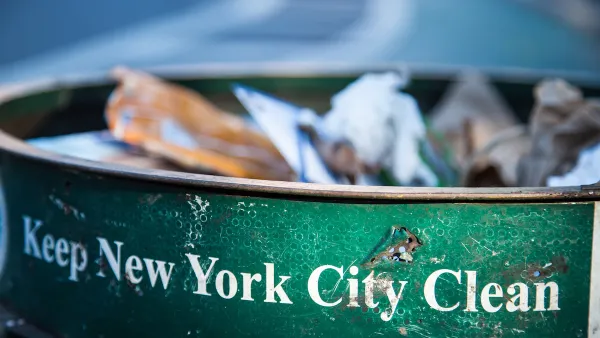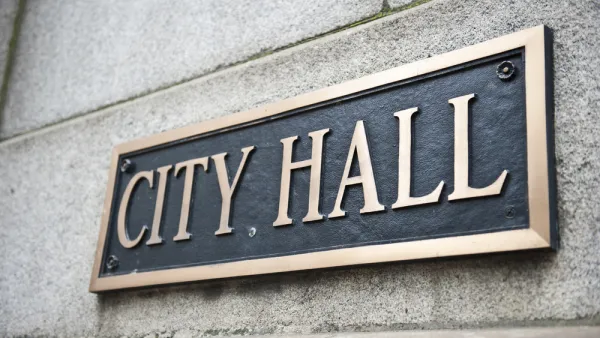SoHo, a Manhattan neighborhood full of luxury apartments and a median income of $111,000/year, must accept a new facility that includes a garage for sanitation trucks. Why, and how will it test the city's commitment to infrastructure design?
A core environmental justice fight has long been the fair distribution of necessary nuisance uses throughout a city. Poor neighborhoods tend to be over-burdened with unpleasant parts of public infrastructure like bus depots and sewage plants, with cumulative negative effects on resident health and quality of life.
Often activists in these over-burdened neighborhoods band together to fight the location of yet another of these kinds of facilities, which leads to inevitable labeling of them as just naysayers and exchanges like, "Well where should they go?" "How about the rich neighborhoods take their share?" "Yeah, like that will happen."
In New York City, former Mayor Bloomberg apparently decided to make it happen, roughly, with a solid waste plan that at least declares that each of the city's five boroughs should take adequate responsibility for its own trash. And current Mayor DeBlasio is sticking with the plan.
This means, as CityLab's Aarian Marshall recently reported, that SoHo, a Manhattan neighborhood full of luxury apartment towers and a median income of $111,000/year, has been forced to accept, despite protest from some very wealthy and powerful people, a large building that includes a garage for sanitation trucks.
FULL STORY: Rich Neighborhood in NYC Actually Gets a “Noxious” Use

National Parks Layoffs Will Cause Communities to Lose Billions
Thousands of essential park workers were laid off this week, just before the busy spring break season.

Retro-silient?: America’s First “Eco-burb,” The Woodlands Turns 50
A master-planned community north of Houston offers lessons on green infrastructure and resilient design, but falls short of its founder’s lofty affordability and walkability goals.

Delivering for America Plan Will Downgrade Mail Service in at Least 49.5 Percent of Zip Codes
Republican and Democrat lawmakers criticize the plan for its disproportionate negative impact on rural communities.

Test News Post 1
This is a summary

Test News Headline 46
Test for the image on the front page.

Balancing Bombs and Butterflies: How the National Guard Protects a Rare Species
The National Guard at Fort Indiantown Gap uses GIS technology and land management strategies to balance military training with conservation efforts, ensuring the survival of the rare eastern regal fritillary butterfly.
Urban Design for Planners 1: Software Tools
This six-course series explores essential urban design concepts using open source software and equips planners with the tools they need to participate fully in the urban design process.
Planning for Universal Design
Learn the tools for implementing Universal Design in planning regulations.
EMC Planning Group, Inc.
Planetizen
Planetizen
Mpact (formerly Rail~Volution)
Great Falls Development Authority, Inc.
HUDs Office of Policy Development and Research
NYU Wagner Graduate School of Public Service





























